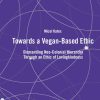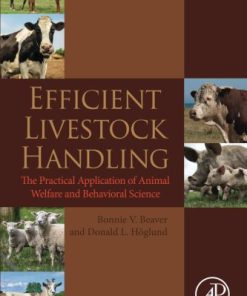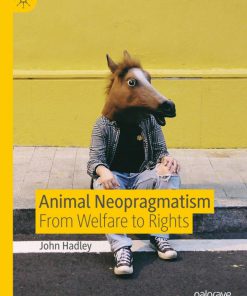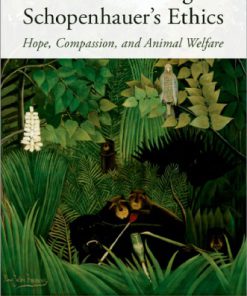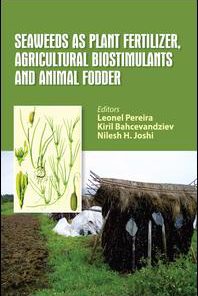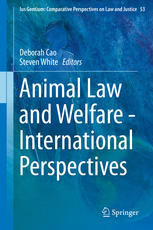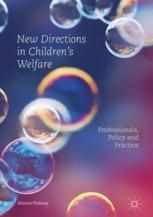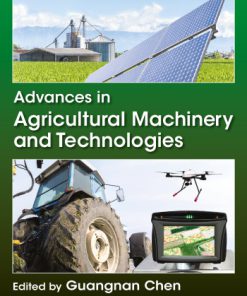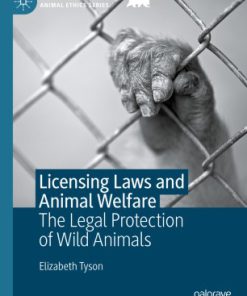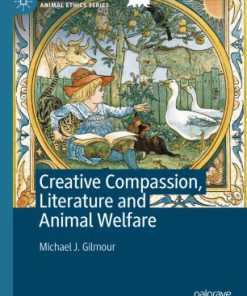Advances in Agricultural Animal Welfare Science and Practice 1st Edition by Joy Mench 0081012468 9780081012468
$50.00 Original price was: $50.00.$25.00Current price is: $25.00.
Advances in Agricultural Animal Welfare Science and Practice 1st Edition by Joy Mench – Ebook PDF Instant Download/DeliveryISBN: 0081012468, 9780081012468
Full download Advances in Agricultural Animal Welfare Science and Practice 1st Edition after payment.
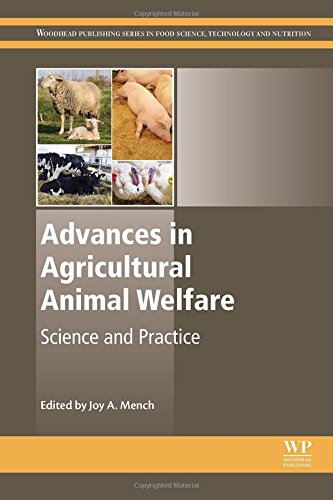
Product details:
ISBN-10 : 0081012468
ISBN-13 : 9780081012468
Author: Joy Mench
Advances in Agricultural Animal Welfare fully explores developments in the key areas of agricultural animal welfare assessment and improvement. Analyzing current topical issues, as well as reviewing the historical welfare issues, the volume is a comprehensive review of the field.
Divided into five sections, the book opens in Part One by reviewing advances in animal welfare science, examining cognitive psychology, genetics and genomics. Part Two then looks at transdisciplinary research in animal welfare, with coverage of bioethics, welfare and sustainability from both environmental and food safety perspectives. Part Three explores the process of translating science into policy and practice, followed by discussion on the global achievability of welfare standards in Part Four. Finally, Part Five highlights some emerging issues in agricultural animal welfare.
Advances in Agricultural Animal Welfare Science and Practice 1st Table of contents:
Part I: Advances in Animal Welfare Science
1. Cognition as a cause, consequence, and component of welfare
Abstract
1.1 Introduction
1.2 Cognitive influences on welfare
1.3 Environmental effects on cognition
1.4 Cognitive aspects of welfare
1.5 Levels of analysis and future directions
1.6 Conclusions and implications
References
2. Genetics and genomics of animal welfare
Abstract
2.1 Introduction
2.2 Behavior and welfare—defining the concepts
2.3 Resource allocation theory
2.4 Fundamental genetics
2.5 Behavior genetics—finding genes for behavior
2.6 Methodological problems in behavior genetics
2.7 From welfare to genes: top-down approaches
2.8 From genes to welfare: bottom-up approaches
2.9 Beyond genetics and genomics: epigenetics
2.10 Future perspectives
2.11 Conclusions and implications
References
Part II: Animal Welfare and Sustainability of Animal Agriculture
3. Animal ethics: Probing the philosophical issues
Abstract
3.1 Introduction
3.2 Mapping the terrain of animal philosophy
3.3 Philosophy of mind
3.4 Mainstream animal ethics
3.5 Additional currents in the mainstream
3.6 Pragmatist, nonideal, and interdisciplinary ethics
3.7 Conclusion: how philosophy can help
References
4. Animal welfare and environmental issues
Abstract
4.1 Introduction
4.2 Environmental sustainability
4.3 Nexus of animal welfare and environmental sustainability
4.4 Conclusions and implications
References
5. Animal welfare and food safety in modern animal production
Abstract
5.1 Introduction
5.2 Stress in farm animals and effects on the gastrointestinal tract
5.3 Effect of stress mediators on bacteria in the gastrointestinal tract
5.4 The impact of stress in farm animals on food safety risk
5.5 Conclusion and implications
References
Part III: Translating Science into Policy and Practice
6. Science in the real world—benefits for researchers and farmers
Abstract
6.1 Introduction
6.2 Commercial-scale experimental studies
6.3 Taking advantage of variation—epidemiology
6.4 Automated monitoring of behavior
6.5 Conclusions and implications
References
7. Animal welfare: Translating science into practice
Abstract
7.1 Introduction
7.2 The structure of animal welfare science
7.3 Translating science into practice and policy
7.4 Types of requirements in animal welfare standards
7.5 The science behind the standards
7.6 Objectives reflected in standards
7.7 Achieving “social validity”
7.8 Similar environments, different outcomes
7.9 Human factors in animal welfare
7.10 Conclusions and implications
References
8. Perspectives on the emerging role of US veterinarians in education, policy, politics, and research
Abstract
8.1 Introduction
8.2 The American Veterinary Medical Association and Veterinary Education in Animal Welfare
8.3 Farm animal welfare legislation in the United States
8.4 Nonregulatory oversight of farm animal welfare
8.5 International welfare standards and the veterinarian’s role
8.6 Veterinary involvement in animal welfare research
8.7 Conclusions and implications
References
Part IV: Animal Welfare Standards: Are They Globally Achievable?
9. The perspective of the World Organisation for Animal Health
Abstract
9.1 Introduction
9.2 Animal welfare: World Organisation for Animal Health’s role and involvement in a global context
9.3 The World Organisation for Animal Health animal welfare standards
9.4 Challenges and opportunities for the World Organisation for Animal Health animal welfare standards implementation
9.5 Implementation tools
9.6 Some examples of successful implementation
9.7 Conclusions and implications
Acknowledgment
References
10. Perspective from Asia, Far East and Oceania, and the Middle East
Abstract
10.1 Introduction
10.2 Implementing global animal welfare standards
10.3 Attitudes and drivers for change
10.4 Progress in implementing global animal welfare standards
10.5 Conclusion
References
11. Perspective from Latin America
Abstract
11.1 Introduction
11.2 Animal production systems in Latin American countries and social concerns regarding animal welfare
11.3 World Organization for Animal Health (OIE) animal welfare standards and local regulations/standards, achievements, and future perspectives
11.4 Importance of international trade and product quality for achieving animal welfare standards
11.5 Advances in providing scientific information to support local regulations regarding AW
11.6 Education, capacity building, and technology transfer to put animal welfare standards/regulations into practice
11.7 Conclusions and implications
References
Part V: Emerging Issues
12. Slaughter without stunning
Abstract
12.1 Introduction
12.2 Scientific aspects of slaughter without stunning with respect to animal welfare
12.3 Strategies to reduce the negative welfare impact of slaughter without stunning (recommendations for good practices)
12.4 Further research areas
12.5 Conclusions and implications
References
13. Urban agriculture
Abstract
13.1 Introduction: role of animals in early American cities
13.2 Importance for urban poor
13.3 Job of regulating: control, land-use, and welfare regulations
13.4 Animal control: protecting people from animals
13.5 Welfare: protecting animals from people
13.6 The current landscape of backyard regulations
13.7 Yes! in my backyard: modernizing urban livestock ordinances
13.8 Conclusion
People also search for Advances in Agricultural Animal Welfare Science and Practice 1st:
advancements in animal agriculture
advances in animal biosciences
advancements in animal science
advances in agricultural science
advances in agricultural animal welfare science and practice
Tags: Advances, Agricultural Animal, Welfare Science, Practice, Joy Mench
You may also like…
Biology and other natural sciences - Plants: Agriculture and Forestry
Politics & Philosophy - Anthropology
Politics & Philosophy - Anthropology
Business & Economics
Animal Law and Welfare International Perspectives 1st Edition Deborah Cao
Politics & Philosophy
Politics & Philosophy - Anthropology



